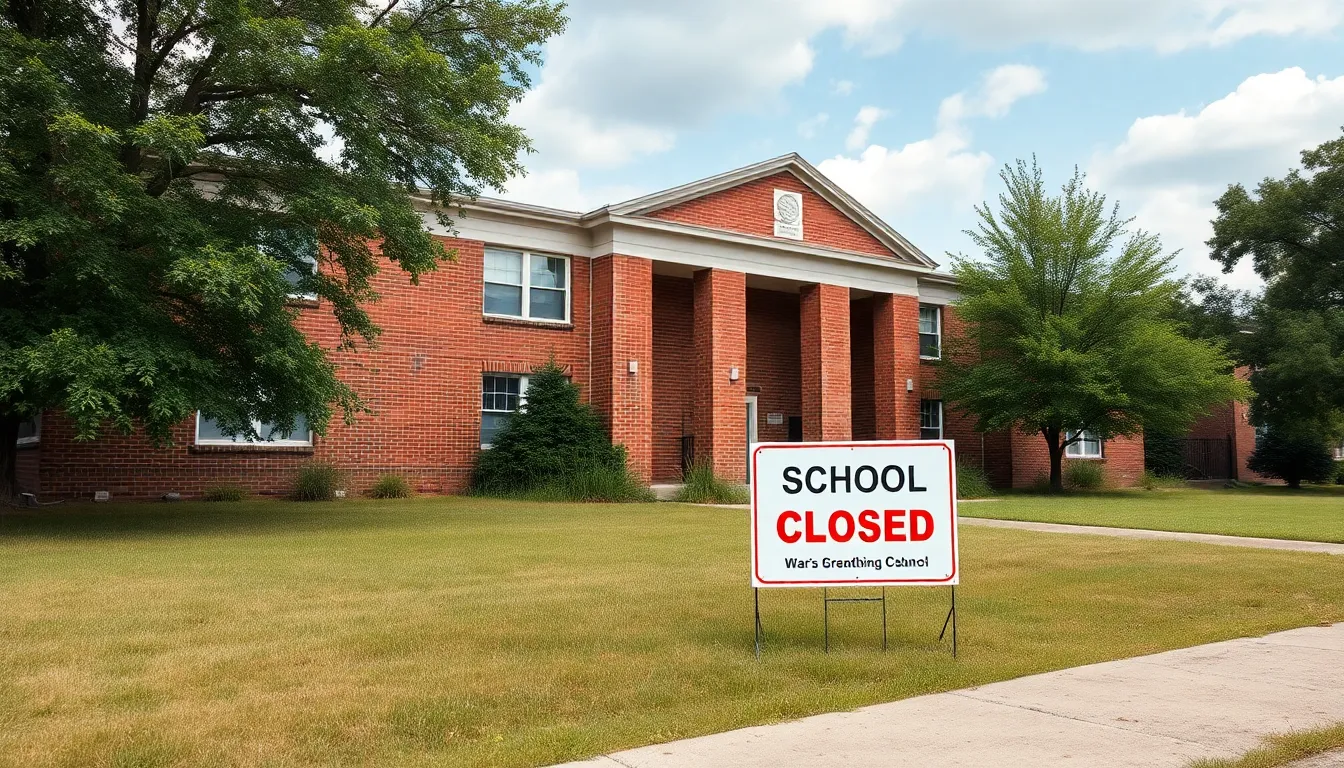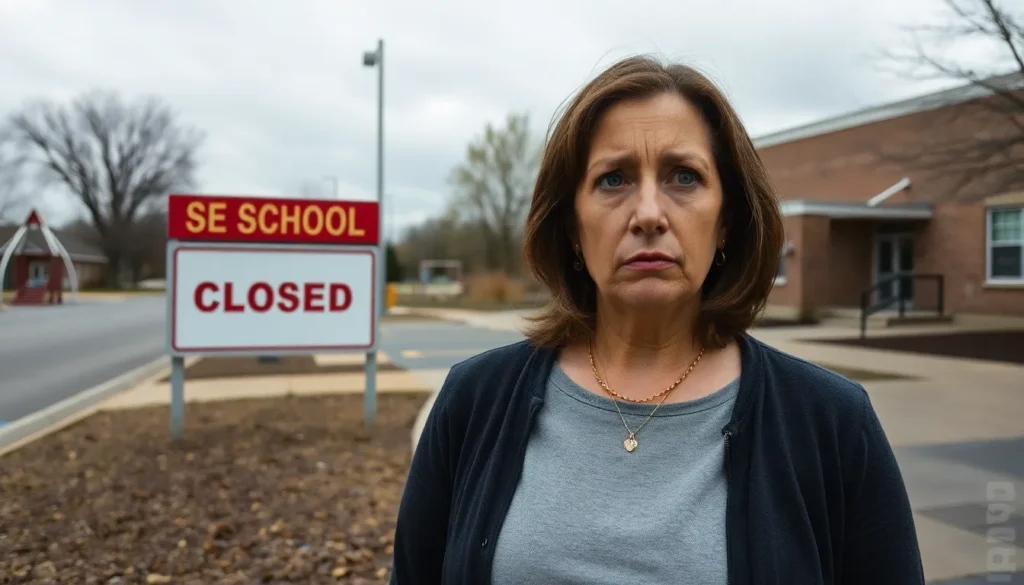Table of Contents
ToggleRecent school closures in Georgetown, Williamsburg, and Charleston have sparked significant concern among parents and educators alike. As communities grapple with the implications of these decisions, the impact on students’ education and well-being remains a pressing issue.
Understanding the reasons behind these closures is crucial for stakeholders. Factors such as budget constraints, declining enrollment, and safety concerns have all played a role in shaping the educational landscape. As discussions unfold, it’s essential to explore how these changes affect not just the schools but also the communities they serve.
Overview of Georgetown Williamsburg Charleston School Closures
Georgetown, Williamsburg, and Charleston school districts recently implemented closures that sparked significant discussion among parents and educators. Key factors behind these closures include budget constraints, declining enrollment numbers, and safety concerns that directly impact student education and welfare.
The Georgetown school district faced financial challenges, leading to reduced funding and resource allocation. Similar trends emerged in Williamsburg, where enrollment figures dipped over recent years. This decline prompted administrative decisions to streamline operations and manage costs effectively.
In Charleston, safety issues within school facilities triggered concerns regarding the well-being of students and staff. School officials prioritized creating a secure learning environment, leading to the temporary closure of facilities deemed unsafe.
These closures not only affect educational access but also have broader implications for community support systems. Local businesses and social services connected to the schools began experiencing changes as well, creating a ripple effect throughout these communities. Understanding the full impact of these closures requires ongoing dialogue among all stakeholders involved.
Reasons for School Closures

Understanding the reasons for school closures in Georgetown, Williamsburg, and Charleston reveals significant challenges facing the education system. Key factors include pandemic impacts and budget constraints, both of which heavily influence operations.
Pandemic Impact
The COVID-19 pandemic disrupted traditional educational methods, forcing schools to adapt rapidly. Schools implemented remote learning to prioritize health and safety but faced challenges such as technological access and student engagement. Increased illness rates among staff and students led to temporary closures, complicating the delivery of consistent education. Additionally, mental health concerns prompted administrators to reconsider in-person classes, affecting enrollment and resulting in more closures.
Budget Constraints
Financial instability severely impacts school districts in Georgetown, Williamsburg, and Charleston. Reduced state funding combined with declining property tax revenue creates budget constraints. Such financial challenges force administrators to make difficult decisions, often prioritizing essential services and leading to closures of underfunded schools. The need to allocate resources efficiently results in streamlining operations, which may include consolidating schools and reducing staff, ultimately impacting educational access for local communities.
Community Response to Closures
Community response to the school closures in Georgetown, Williamsburg, and Charleston reflects a range of emotions and concerns from parents, educators, and students. These closures have prompted discussions about the long-term effects on education and community cohesion.
Parental Concerns
Parents express significant anxiety about the impact of school closures on their children’s education and mental health. They raise worries about the disruption of learning and the potential loss of social connections. Many parents emphasize the importance of communication from school officials regarding the reasons for closures and the timeline for re-opening. Financial strain often leads to insufficient resources in alternative educational arrangements, leaving parents seeking additional support and clarity from local districts. Parents advocate for immediate solutions to address learning gaps and ensure safe learning environments, pushing for transparency and proactive measures to avoid further disruptions.
Student Sentiments
Students voice a mixture of frustration and uncertainty regarding school closures. Many students miss the social aspects of in-person education, highlighting feelings of isolation during remote learning. Concerns about academic performance frequently surface, with students yearning for supportive interactions with teachers and peers. Some students report challenges in adapting to online learning platforms, raising issues related to technology access and engagement. Students desire a return to traditional classroom settings, where collaborative learning and extracurricular activities thrive, emphasizing their need for a stable educational experience. As community members, students also advocate for dialogue with school authorities about their experiences and suggestions for improvement.
Implications of School Closures
School closures in Georgetown, Williamsburg, and Charleston extend beyond immediate educational challenges, affecting students, families, and the wider community.
Educational Disruption
Educational disruption manifests in various forms due to school closures. Students face significant learning gaps, particularly those from low-income families who may lack access to essential educational resources such as technology and internet connectivity. The shift to remote learning diminishes engagement levels, resulting in reduced academic performance. According to a study by the Brookings Institution, over 40% of disadvantaged students didn’t participate in remote learning effectively. Furthermore, irregular class schedules and inconsistent instructional quality contribute to feelings of frustration among students, weakening their academic foundation and emotional resilience.
Long-term Effects on the Community
Long-term effects on the community from school closures can be profound. Schools often serve as central hubs for social interaction and community resources. With reduced access to education, local businesses that rely on school-related activity experience downturns in revenue. Additionally, community organizations that provide services to students and families may face increased demand due to heightened social needs. A report by the National Education Association indicates that school closures often lead to increased crime rates and deteriorating neighborhood conditions. Parents begin to seek alternative educational options, further fragmenting the community. Local leaders must address these challenges through collaborative efforts aimed at revitalizing educational access and restoring community cohesion.
Future of Education in Georgetown Williamsburg Charleston
The future of education in Georgetown, Williamsburg, and Charleston hinges on strategic responses to recent school closures. Administrators will focus on addressing budgetary constraints by exploring alternative funding sources, such as grants and community partnerships. Collaborative efforts among local governments, businesses, and educational institutions can foster innovative solutions to support underfunded schools.
Enrollment strategies will also evolve. Schools may implement outreach programs to attract families, emphasizing the importance of community engagement in revitalizing enrollment figures. Schools may adapt curricula to meet the diverse needs of students, incorporating technology and hands-on learning to stimulate interest and participation.
Safety measures will remain a priority. School districts will enhance protocols to address health and security concerns, ensuring that facilities meet high safety standards. Investment in infrastructure will be critical, with upgrades aiming to create secure and conducive learning environments.
Mental health support systems will expand to address the psychological impacts of school closures. School counselors and mental health professionals will play pivotal roles in supporting students’ well-being. Programs focusing on resilience and coping strategies can help students navigate challenges associated with educational disruptions.
Stakeholder engagement will drive the future of education. School boards will actively seek input from parents, educators, and community leaders to craft policies reflecting collective interests. Transparency in decision-making will foster trust among constituents, promoting shared responsibility for the success of educational initiatives.
Educational innovation will play a significant role. Schools may embrace hybrid learning models that combine in-person and remote education, allowing flexibility to meet various student needs. Technology integration will enhance learning experiences, ensuring that educational delivery adapts to changing circumstances.
The future of education in Georgetown, Williamsburg, and Charleston will depend on a multifaceted approach that combines financial sustainability, community engagement, safety, and innovative practices. Local districts will need to prioritize collaboration and adaptability to ensure a thriving educational landscape for all students.
The recent school closures in Georgetown, Williamsburg, and Charleston underscore the pressing need for effective solutions in the education sector. As communities grapple with the implications of these closures, it’s vital for parents, educators, and local leaders to engage in open dialogue. Addressing budget constraints and safety concerns will be essential for restoring trust and stability in the educational landscape.
Moreover, focusing on mental health support and innovative learning strategies can help mitigate the adverse effects on students. The path forward requires a collaborative effort to ensure that all students have access to quality education and the resources they need to thrive. By working together, these communities can build a resilient educational system that prioritizes the well-being of every student.




